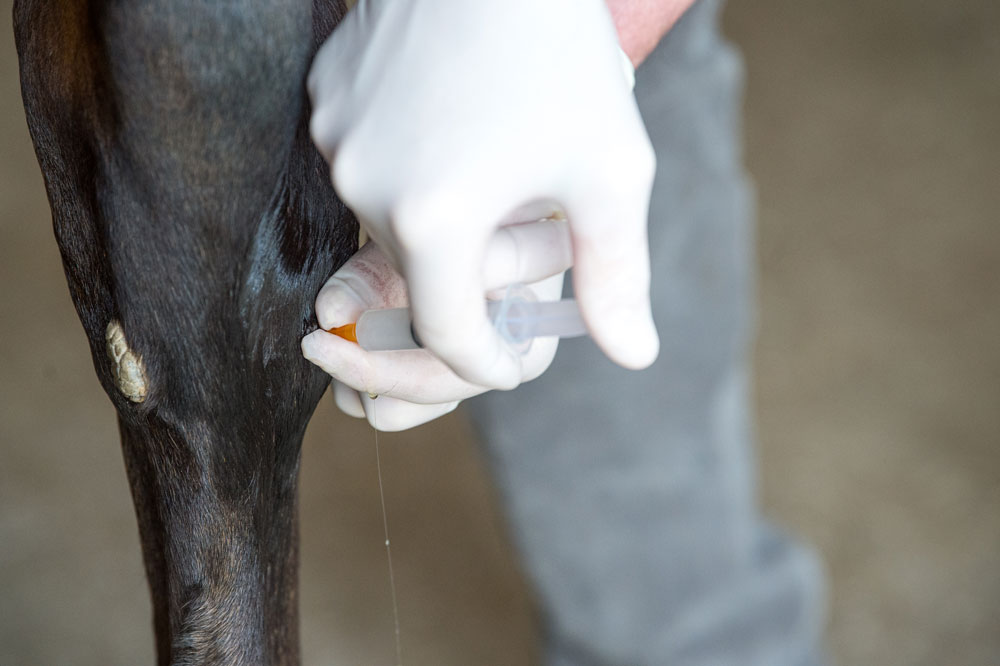
It is common for equine practitioners to combine a small amount of amikacin with medications used in joint injections or when treating septic arthritis to limit risk of infection and/or an inflammatory flare. At the NEAEP 2020 Virtual Symposium, Tom Divers, DVM, ACVIM DACVECC, of Cornell University, noted an interesting paper about the use of this antibiotic for this application [Pezzanite, L.; Chow, L.; Soontararak, S.; et al. Amikacin induces rapid dose-dependent apoptotic cell death in equine chondrocytes and synovial cells in vitro. Equine Veterinary Journal Jan 2020, vol. 52, pp. 715-724; doi:10.1111/evj.13243].
Previous studies have shown that aminoglycosides are toxic to mesenchymal stem cells in vitro. Other studies have demonstrated that injection of drugs into the joints maintains a high concentration of medicine due to slow distribution of the drug out of synovial fluid. This then increases the duration of effect by a drug such as amikacin, which is shown to be cytotoxic to chondrocytes and synovial cells.
The in vitro study evaluated the effects of amikacin on four cell types for different exposure times, concentration and with or without buffers in the presence of synovial fluid. The findings are significant:
- The presence of synovial fluid did not mitigate detrimental effects of amikacin.
- Cell death by amikacin is dose-dependent due to reduction in cell metabolism.
- No matter how buffered, amikacin is cytotoxic to joint tissues.
- At clinical doses, amikacin induces rapid, pronounced cell death of equine joint cells.
The authors noted at the beginning of their paper that the incidence of septic arthritis following joint injection is <0.1%, and that concurrent administration of antibiotics did not reduce infection risk. Despite this, 46% of equine practitioners surveyed used antimicrobial agents with any intra-articular (IA) injections, and an additional 32% used them in more specialized situations, such as with IA polysulfated glycosaminoglycans or corticosteroids.
While the effects of amikacin in vivo and its penetration into articular cartilage are not yet defined, it bears mention that casual use of amikacin in conjunction with IA injections should be considered carefully. The authors commented that concurrent use of corticosteroids and hyaluronic acid might have a mild protective effect against amikacin toxicity as demonstrated in vitro.
The authors concluded that, “The extremely low incidence of iatrogenic septic arthritis argues against any benefit from prophylactic administration of amikacin.” They recommend that prophylactic use of IA amikacin be “reduced or eliminated pending further in vivo dose titration and toxicity studies.”








